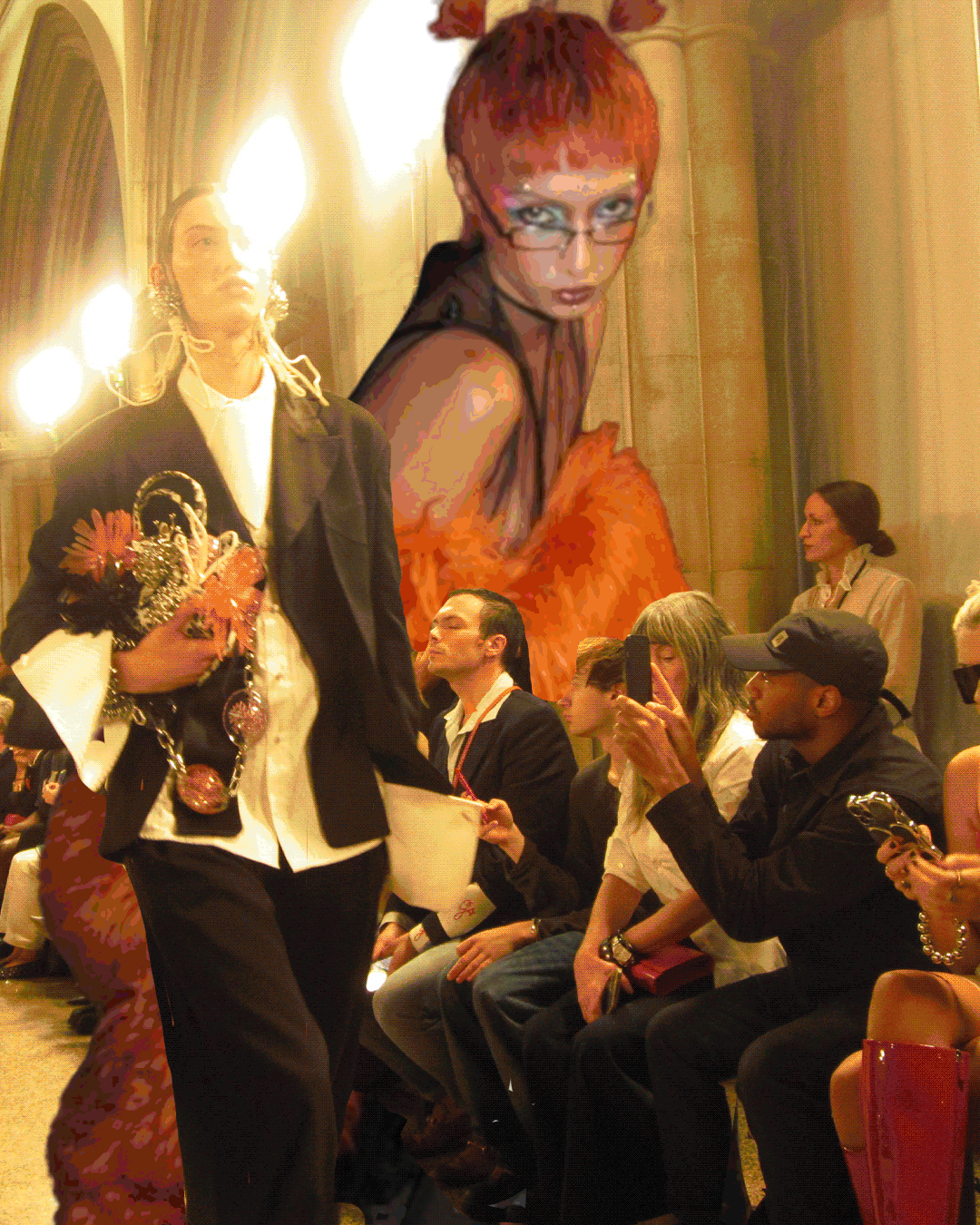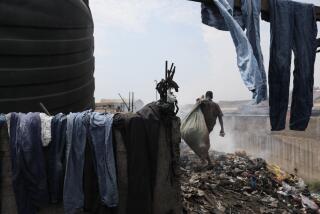China’s U.S. Debut : West Greets East on First Visit of Shanghai Models, Western Fashions
- Share via
Fashion in China has come a long way since the drab blue and gray Mao jackets of the 1960s and 1970s.
Just how much it has changed will be apparent this weekend when a dozen professional models from Shanghai will show off Western-style suits, dresses and coats in floral prints and glimmering jewel tones.
The women, who consular officials say are the first models from China to stride down runways in the United States, are sponsored by the Shanghai No. 1 Silk Dyeing and Printing Factory, a state-owned company that recently opened a Santa Monica sales office to promote its fabrics and apparel.
At a preview this week, the models bopped to Madonna’s “Dress You Up” and glided to Chinese classical music as they paraded silk in a medley of textures and colors: ensembles of cowl-neckline tops, pants with decorative yoke waistlines and open, flowing jackets in satiny, emerald green, bronze, olive green and gold.
The Chinese showed evening coats of black silk velvet and suits of ash gray, nubby raw silk. Quilted jackets featured silk panels hand-painted in sand, coral, aqua and ivory. A gray-blue and midnight-blue floral-print Jacquard was made into dresses, coats and hats.
Occasional Asian accents also were present: Mandarin collars, frog closures, and qi paos (Chinese traditional dresses) trimmed with hand-embroidered dragons and flowers. Sashes at the waist, influenced by Tibetan and highland-minority dress, were tie-dyed black, orange, grape, royal blue and bright yellow.
Behind the allure of all these fashions--which Hal Kaltman, president of the Textile Assn. of Los Angeles, termed “very Western . . . and very couture”--was the fascination of the models themselves, women, ages 15 to 25, who are on average 5 feet, 9 inches.
Several of the models are former athletes, modeling director Lydia Xie said. They come from families of government officials, factory workers and professors.
To get to wear the latest in Chinese fashions, each model competed against roughly 900 other Shanghai women and were judged on their height, weight, figure, walk, rhythm, facial shape and disco dancing ability, Xie said.
Zhu Wei Hong, 24, has been on the modeling team since it was formed four years ago. She has traveled with it to France, Germany, Hong Kong, Singapore and Japan.
Though she grew up in the 1967-76 Cultural Revolution, when China waged a campaign to repudiate things Western, capitalist and bourgeois, “since I was a child, I’ve liked to wear beautiful dresses,” the former gymnast said through an interpreter.
During the revolutionary times, she noted, “dresses were not colorful. Some girls wore army uniforms.” The dull-green fatigues were “regarded as fashion at that time” even in Shanghai, which has been and continues to be China’s arts and fashion trend-setter.
In the early 1980s, Deng Xiaoping declared it was time to “open up to the outside world.” Model Hong Hua, the daughter of printing factory workers, said: “Many girls liked to beautify themselves. But most didn’t know how.
“I thought I should become a model to show (members of) the public how to beautify themselves and what kind of dressing is beautiful,” said Hong, 22, who wore for the interview a black, dolman sleeve blouse tucked into black, yoke-waisted pants that flared at the hips and tapered to the ankles.
Her hair was colored auburn and had been permed during the team’s trip to Paris in May. She wore costume-jewelry rings on her fingers and tiny earrings in her pierced ears.
One of the newest models, Chen Wen Yun, 15, showed many garments, ranging from a rose qi pao to a floral-print flyaway coa at the preview.
She said there were no role models in China for her to emulate, though she did learn to window shop on Huai Hai Street, Shanghai’s Rodeo Drive, where she fantasized. “Who doesn’t like being a flower girl, a bride, wearing new clothes?” she asked.
Now she gets something of that chance. She and the other models spend four hours daily on walk and dance exercises; they spend another four hours studying music appreciation, English, flower arranging and painting. They model for foreign tourists and dignitaries visiting Shanghai. They travel to trade fairs in Guangzhou, Beijing and other Chinese cities. They promenade in exhibition halls, filled with thousands of Chinese who pay 20 cents admission to the fairs.
“Sometimes there are three shows (a day), and you have to keep your eyes open and your makeup on,” Hong said. Sometimes “the designer’s idea is hard to express. You have to show the taste, what’s good about this dress.”
But they’re not complaining. The average Chinese city worker earns $60 a month; models are paid $81, which includes subsidies for shampoo, food, clothes and Christian Dior, Max Factor and other imported cosmetics.
They are, of course, at the zenith of China’s modeling world; below them are thousands of models, mostly part-time or amateur, in factories and companies big and small.
“We know it’s a well-sought-after job,” Hong said.
Their travels to Los Angeles earlier this week took them to a Monterey Park grocery store, where they delighted in roaming the aisles.
They picked out a pound of assorted candy, juice, fruit, shampoo and conditioner, six tins of Danish butter cookies and a gallon of vanilla ice cream. They took pictures of each other next to the oranges. The butchers at the meat counter stared with their mouths open, then grinned and whispered.
The models, who will present shows at Lincoln Plaza Hotel in Monterey Park today and Saturday and at the Stouffer Concourse Hotel in Los Angeles on Sunday, will show fashions that Larry Fang, the factory’s Santa Monica vice president, said would be sold to buyers for wholesale prices of $40 to $100, versus the $27 to $81 the fashions might cost Chinese buyers.
But even at the lower prices, the clothes are out of the reach of most women in China.
“Only in the last few years has fashion become an industry (in China),” said Li Yi, one of the factory’s 10 designers and an admirer of Pierre Cardin and Yves Saint Laurent.
Cardin and Kenzo have shown in China, but the country is about three years behind international fashion, he said.
But the government now does not dictate what people should wear, factory director Shi Zhongshan said.
Mao jackets are “almost history,” Fang said, and young people especially are latching onto Western styles. But there are still limits of income--some silk factory fashions, for example, cost more than a worker’s monthly wages.
More to Read
Sign up for Essential California
The most important California stories and recommendations in your inbox every morning.
You may occasionally receive promotional content from the Los Angeles Times.










